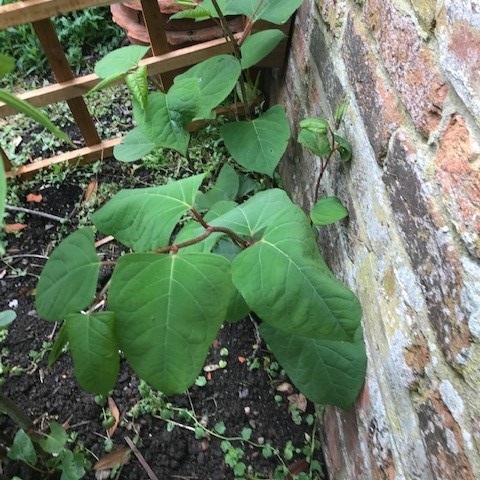
As winter approaches, Japanese knotweed (Fallopia japonica) enters the dormant phase of its annual growth cycle. During this period, the clusters of cream-coloured flowers will disappear and the bamboo-like canes will die away, but don't be fooled - the plant itself lives on beneath the soil.
If you've done your research, you may be aware that Japanese knotweed rhizomes can stay in the ground for a long time, dormant but not dead. This can lead to some real headaches when attempting to buy or sell a property that was affected by knotweed in the past; the plant may no longer be visible above ground, but it's difficult to know for sure that it will never reappear.
Just how long can Japanese knotweed remain dormant?
Typically, Japanese knotweed only remains dormant for a few months in the winter, as per its seasonal life cycle. Japanese Knotweed normally emerges in spring, and as temperatures rise, the plant's red and purple shoots quickly develop into sturdy stems that sprout heart-shaped green leaves. Creamy-white flowers follow in late summer; then, in autumn, the plant loses its colour and begins to die back. Finally, Japanese knotweed retreats beneath the ground during the cold winter months before reappearing in spring.
During this winter dormancy, Japanese knotweed can be very hard to identify. A large majority of the distinctive features (white flowers, green heart-shaped leaves) die back, leaving just the bamboo-like canes that will turn dark-brown and hollow.
This seasonal winter dormancy only lasts for a few months - however, it is a well-documented fact that knotweed can sometimes remain dormant (and viable) for much longer than that. In some cases, a rhizome fragment has remained hidden for years before showing itself once more.
Here's what the Property Care Association (PCA) say in their Code of Practice for the Management of Japanese Knotweed:
"Dormancy can persist for a number of years [...] deep and / or buried rhizome can remain dormant, but viable, for many years, even after above ground material has been successfully treated with herbicide."
SEE ALSO: What is the Code of Practice?
So how can I be sure that my Japanese knotweed won't come back?
As the above excerpt from the PCA's Code of Practice suggests, it's not enough simply to douse this plant with weed killer and declare a job well done. A period of monitoring is necessary even after a seemingly successful herbicide treatment.
We offer a variety of Japanese knotweed treatment plans here at Taylor Total Weed Control, and our recommendations vary depending on the extent of the knotweed infestation and the requirements of the client. That being said, here's an example of a typical treatment programme:
- Several herbicide treatments, spread out over approximately three years
- Two-year monitoring period to ensure that the plant doesn't return
- Optionally, we can provide an insurance-backed guarantee for added reassurance (some lenders require this)
We are registered with the Property Care Association (PCA) to provide invasive weed control services in the UK. Contact Taylor Total Weed Control today to book your free Japanese knotweed survey.
Request a Free Survey
Useful links
